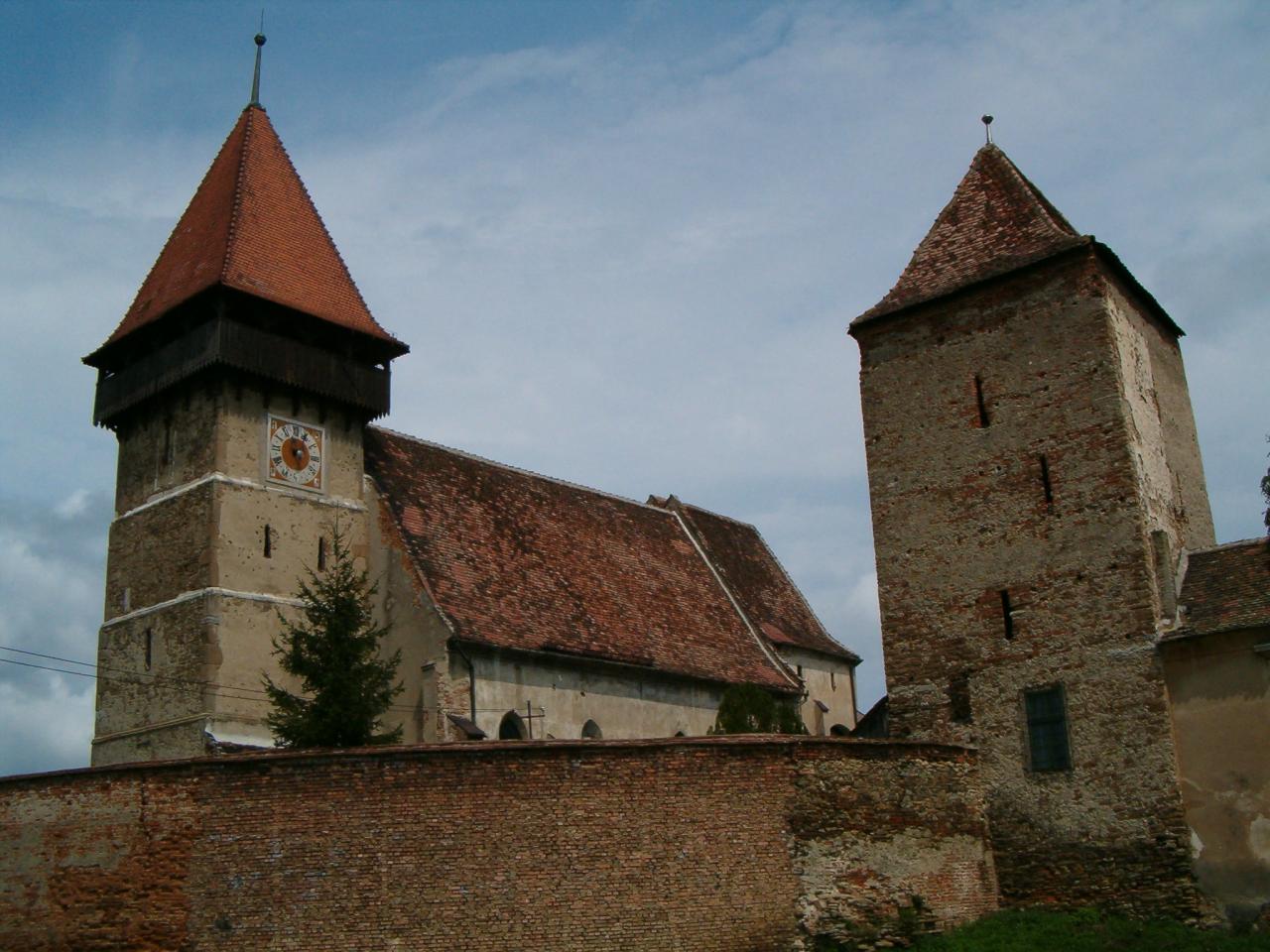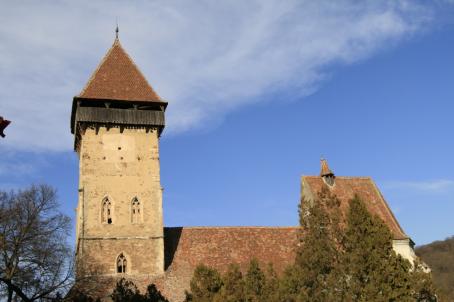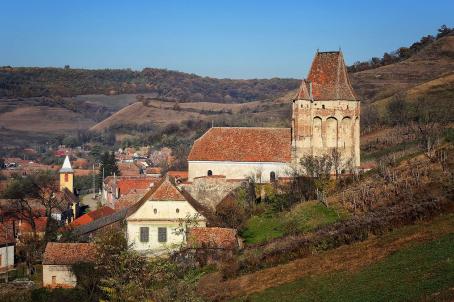Brateiu Fortified Church

Only few remains are still preserved from the Gothic basilica of the 14th century and today’s church bears the signs of the changes it underwent in the 15th century. The aisles were subject to multiple transformations: the southern arcades were demolished and the wall was heightened. Particularly interesting are the arcades preserved on the northern side featuring profiled columns and various capitals. In order to stand against attacks, the church was fortified: a defence floor was built above the chancel and a battlement walk on the bell tower. Moreover the assembly was surrounded by defence wall with a five-level gate tower. A community house was constructed later on in 1906 by using material left from the partial dismantling of the defence wall.
About this building
For more information visit on this building visit https://kirchenburgen.org/en/location/pretai-brateiu/





